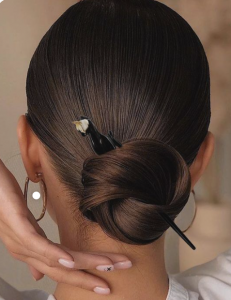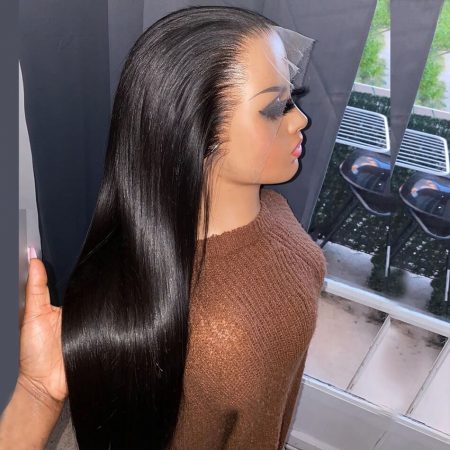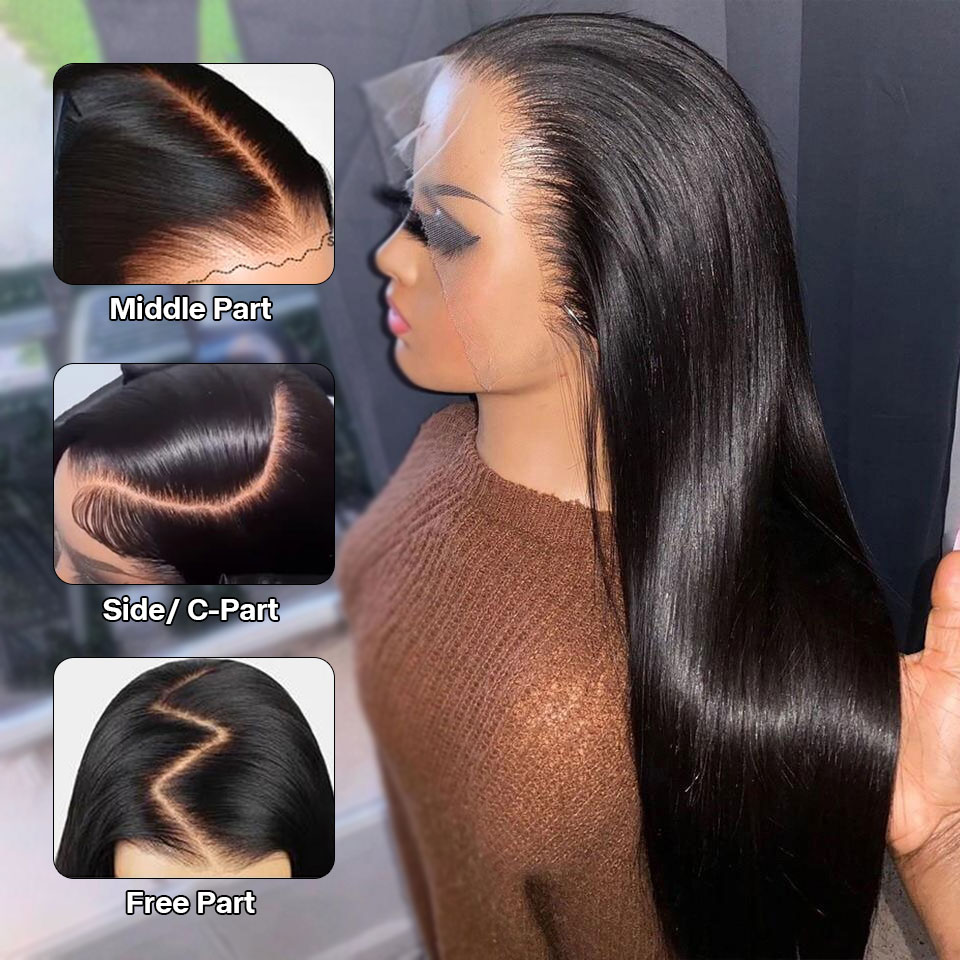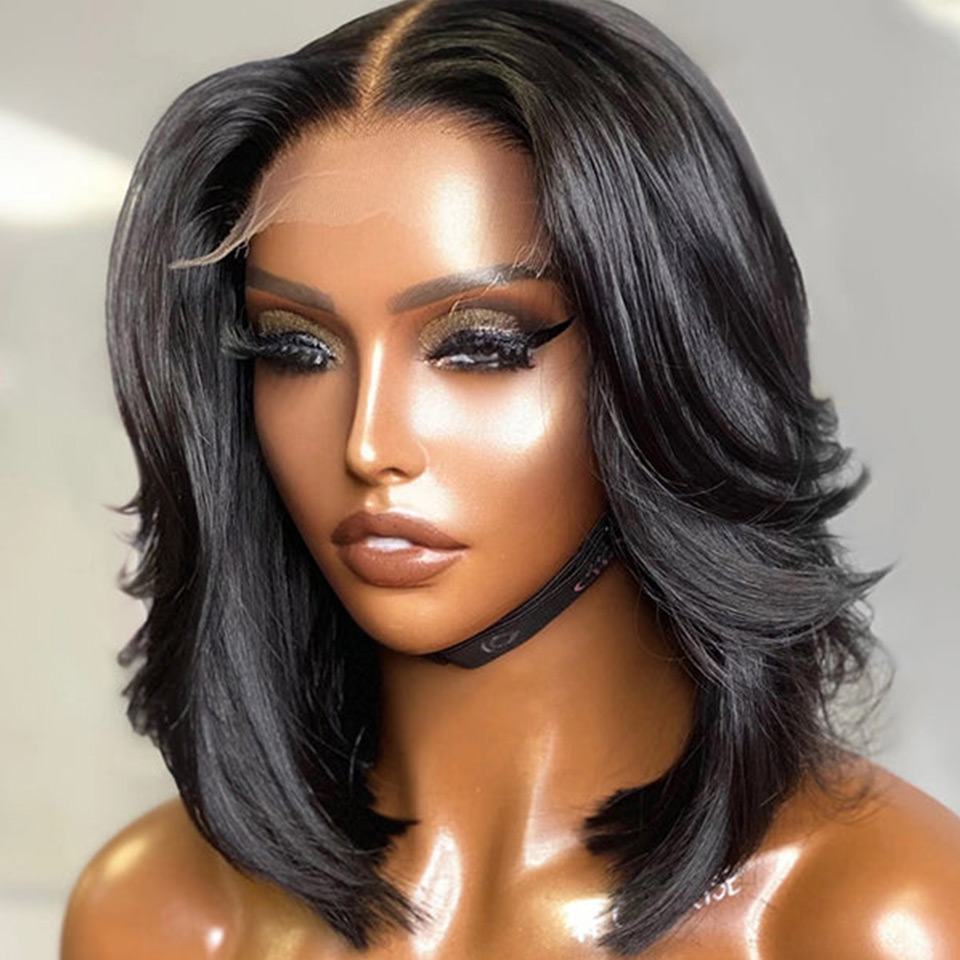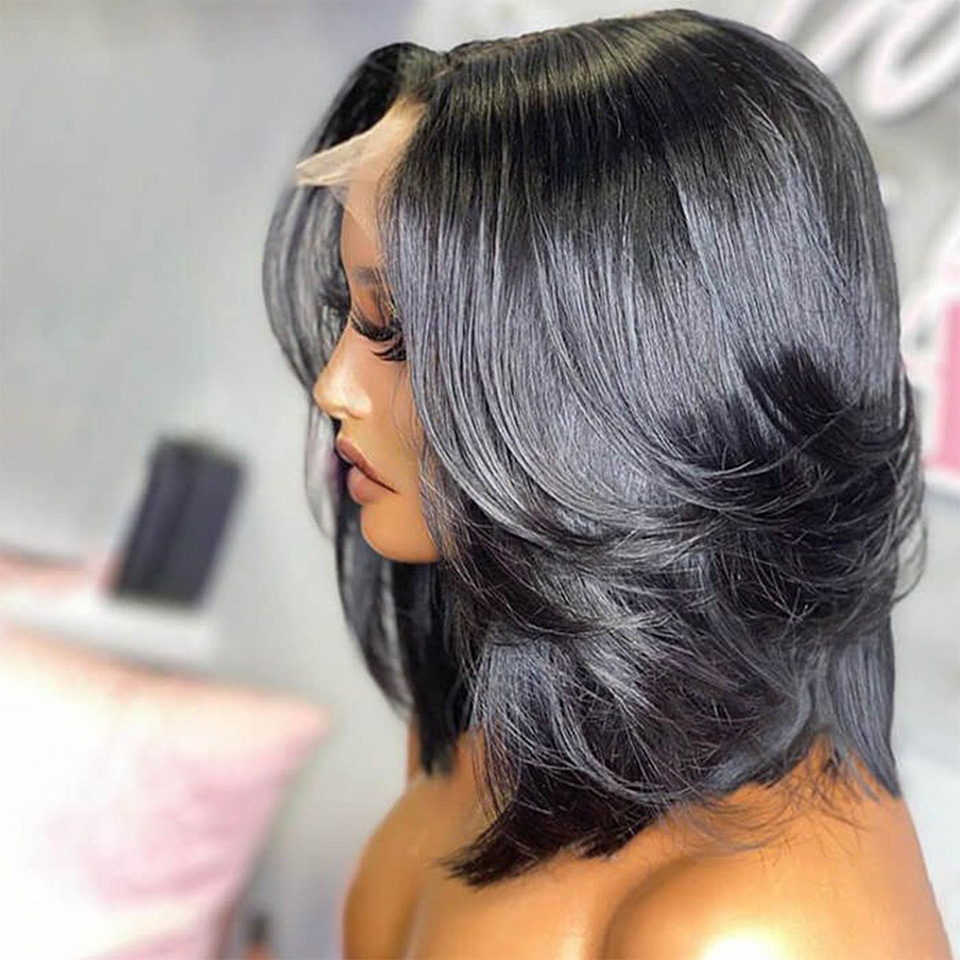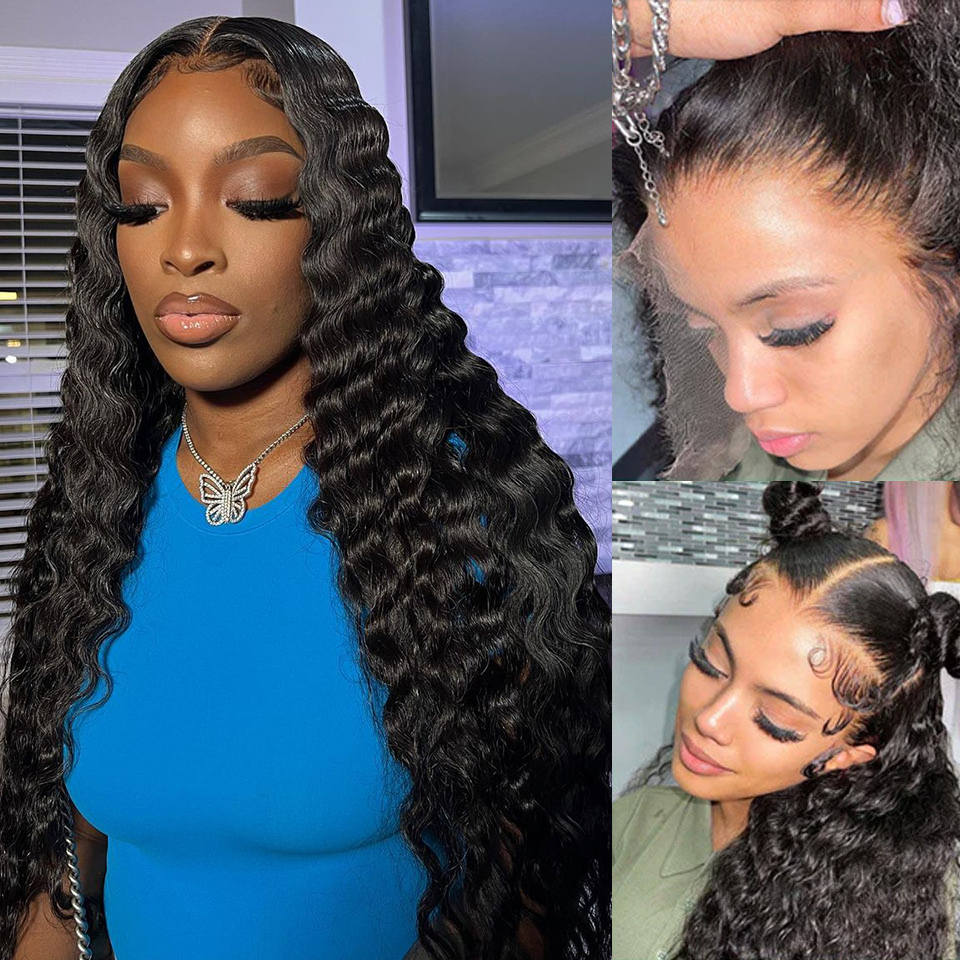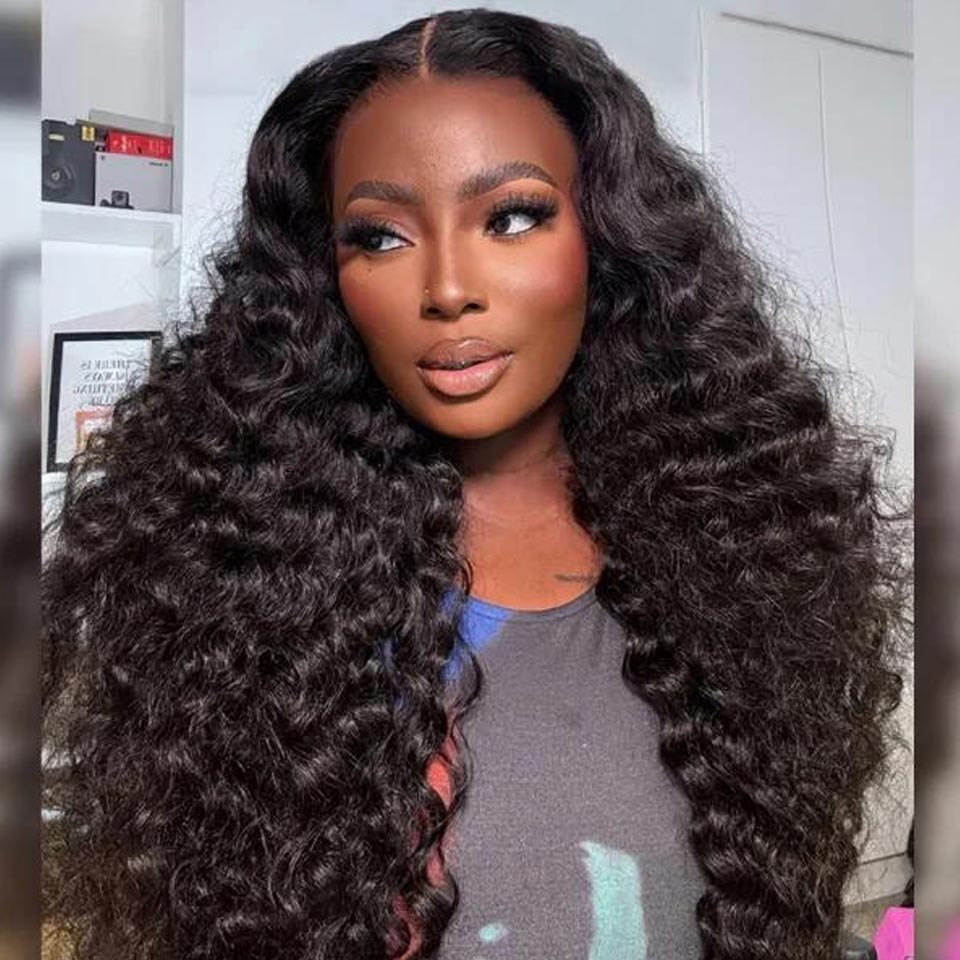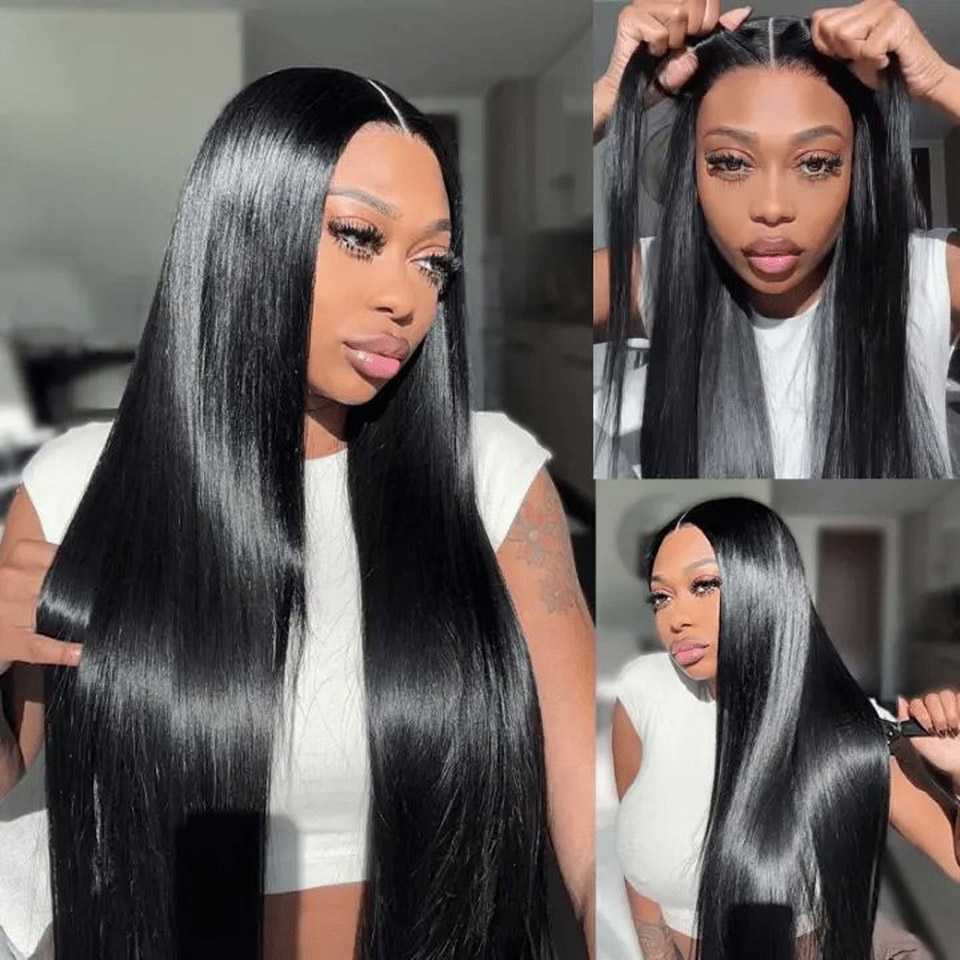Glueless wigs have become increasingly popular among wig wearers due to their convenience, comfort, and versatility. Unlike traditional wigs that require adhesive or glue to stay in place, glueless wigs offer a hassle-free alternative that can be easily worn and removed. This beginner’s guide aims to provide comprehensive information about glueless wigs, from their benefits and types to their application and maintenance. Whether you are new to wigs or looking to explore glueless options, this guide will equip you with all the essential knowledge you need to embark on your wig journey.

Understanding glueless wigs.
Glueless wigs have revolutionized the world of wig wearers, providing a convenient and comfortable alternative to traditional wigs that require adhesive or glue for attachment. These wigs offer a hassle-free experience, allowing individuals to achieve various hairstyles and change their look without the need for adhesives or damaging their natural hair. Understanding the concept and benefits of glueless wigs is essential for anyone considering venturing into the world of wig wearing.
What are glueless wigs?
Glueless wigs, as the name suggests, are wigs that do not require glue or adhesive for attachment. They are designed with innovative construction techniques and features that allow them to be worn securely without the need for any additional products. These wigs typically have adjustable straps, combs, clips, or other secure attachment methods built into the cap, ensuring a snug fit on the wearer’s head.
Advantages of glueless wigs for beginners.
Convenience: One of the most significant advantages of glueless wigs is their convenience. Unlike traditional wigs, which require time-consuming and often messy application processes, glueless wigs can be easily worn and removed by the wearer. This convenience is particularly beneficial for beginners who may not have prior experience with wig application.
Comfort: Glueless wigs are designed to prioritize comfort. They typically feature lightweight materials and breathable caps that allow air circulation to the scalp, reducing the chances of discomfort, itching, or sweating. The absence of adhesive also eliminates the potential for skin irritation or allergic reactions.
Versatility: Glueless wigs offer a wide range of styling options. They can be parted in different directions, styled into various updos or ponytails, and even restyled using heat tools (depending on whether the wig is made of human hair or synthetic materials). This versatility allows beginners to experiment with different looks and express their individuality.
Protection for Natural Hair: Glueless wigs provide a protective barrier for natural hair. By wearing a wig, individuals can shield their own hair from daily styling, heat damage, and environmental factors. This protective function can promote healthier hair growth and prevent breakage or split ends.
How do glueless wigs differ from traditional wigs?
Glueless wigs differ from traditional wigs in several key aspects:
Attachment Method: Traditional wigs require adhesive, glue, or tape to be applied directly to the scalp or hairline for secure attachment. Glueless wigs, on the other hand, utilize adjustable straps, combs, clips, or other mechanisms within the cap to hold the wig in place. This eliminates the need for messy adhesive products and simplifies the application process.
Application Time: Applying a traditional wig can be a time-consuming process, as it involves carefully positioning the wig, applying adhesive, and waiting for it to dry. Glueless wigs can be worn more quickly, as they only require the wearer to adjust the straps or attach the clips for a secure fit.
Flexibility: Glueless wigs offer more flexibility in terms of wear and removal. Traditional wigs often require the wearer to commit to extended periods of wear, as removing them can be cumbersome and may involve damaging the adhesive or tape. Glueless wigs can be easily taken off whenever desired, allowing individuals to switch between their natural hair and wig effortlessly.
Maintenance: Glueless wigs are generally easier to maintain than traditional wigs. The absence of adhesive means there is no need to clean off residual glue or tape from the wig or scalp. Cleaning and styling glueless wigs can be done separately, ensuring that the wig remains in good condition and ready to wear.
Types of glueless wigs.
Glueless wigs come in various types, each offering different features and benefits. Understanding the different types of glueless wigs can help beginners choose the one that suits their preferences and needs. Here are some common types of glueless wigs:
Lace front wigs:
Lace front wigs feature a lace panel at the front, extending from ear to ear. The rest of the wig is constructed with a more durable material. The lace front creates a natural-looking hairline, allowing for seamless blending with the wearer’s own hair. Lace front wigs provide versatility in styling, as the lace can be trimmed and customized to match the wearer’s hairline.
Full lace wigs:
Full lace wigs are constructed entirely with lace material, providing a more realistic and natural appearance. The entire wig cap is made of lace, allowing for versatile styling options. With full lace wigs, the hair can be parted anywhere on the scalp, giving the wearer more flexibility in creating different hairstyles. Full lace wigs require more care and attention during application and removal to ensure a secure fit.
360 lace wigs:
360 lace wigs feature a lace panel that extends around the entire perimeter of the wig, creating a complete hairline. The lace at the back allows for high ponytails or updo hairstyles. 360 lace wigs provide a natural-looking hairline all around, making them versatile and suitable for various styling options.
U-part wigs:
U-part wigs have a U-shaped opening at the top of the wig, allowing the wearer to leave a section of their own hair out to blend with the wig. These wigs provide a natural-looking part and allow for easy integration with the wearer’s own hair. U-part wigs are an excellent choice for individuals who want to add volume or length to their natural hair while maintaining a seamless look.
Half wigs:
Half wigs, also known as half-caps or half head wigs, cover only a portion of the wearer’s head, typically from the crown to the nape of the neck. These wigs blend with the wearer’s natural hair, creating a fuller look. Half wigs are ideal for individuals who want to enhance their hair’s volume and length without covering their entire scalp.
Adjustable strap wigs:
Adjustable strap wigs feature straps at the back of the wig cap that can be tightened or loosened to achieve a secure and comfortable fit. These wigs are highly customizable and suitable for individuals with different head sizes. Adjustable strap wigs provide convenience and ease of wear, making them a popular choice for beginners.
Clip-in wigs:
Clip-in wigs are designed with clips attached to the wig cap. These clips allow for easy and secure attachment to the wearer’s natural hair. Clip-in wigs can be quickly applied or removed, making them an excellent choice for individuals who want to switch up their hairstyle for special occasions or events.
Preparing your hair and scalp.
Preparing your hair and scalp before applying a glueless wig is essential to ensure a seamless and comfortable fit. Proper preparation helps create a smooth base for the wig and promotes a natural-looking result. Here are some steps to follow when preparing your hair and scalp:
Cleanse and condition:
Start by washing your hair with a gentle shampoo and conditioner. This step removes any buildup, dirt, or oils that may interfere with the wig’s adherence. Ensure that your hair is thoroughly rinsed and clean, as a clean scalp provides a better surface for the wig to grip onto.
Dry your hair:
Gently towel-dry your hair or use a blow dryer on a low heat setting to dry your hair completely. It’s important to have dry hair before applying a glueless wig, as moisture can cause discomfort and affect the wig’s grip.
Detangle and style:
Use a wide-tooth comb or a wig brush to detangle your hair gently. Start from the ends and work your way up to the roots, being careful not to tug or pull on your hair. If desired, you can style your natural hair by blow-drying, straightening, or curling it before applying the wig. Styling your hair beforehand allows for a smoother blending effect between your natural hair and the wig.
Protect your hair and scalp:
Before wearing the wig, consider using a wig cap or a thin breathable stocking cap to protect your hair and scalp. A wig cap can help keep your hair flat and prevent it from shifting under the wig, ensuring a more secure fit. It also helps to create a barrier between your hair and the wig, preventing potential friction and irritation.
Adjust the wig cap:
If your glueless wig has adjustable straps or hooks, adjust them to fit comfortably around your head. Ensure that the wig cap is secure but not too tight, as this can cause discomfort or headaches. It’s important to find the right balance between a secure fit and maintaining a comfortable wearing experience.
Test the fit:
Place the glueless wig on your head and adjust it to your desired position. Take a moment to check the wig’s alignment with your natural hairline and make any necessary adjustments. Ensure that the wig covers your natural hair completely and that no edges or scalp are visible.
Applying glueless wigs.
Applying a glueless wig involves a straightforward process that allows for easy attachment and removal. Follow these steps to effectively apply your glueless wig:
Prepare your natural hair:
Before applying the wig, ensure that your natural hair is prepared and secured. If your hair is long, consider braiding it or creating flat cornrows close to the scalp. This helps keep your hair flat and prevents it from creating bulk under the wig. For shorter hair, you can use bobby pins or hair clips to secure any loose strands.
Adjust the wig cap:
Place the wig on your head and position it correctly. Adjust the straps, hooks, or Velcro closures inside the wig cap to ensure a snug fit. The wig cap should feel secure but not overly tight. Make sure that the wig’s hairline aligns with your natural hairline, and adjust the wig accordingly.
Secure the combs or clips:
Most glueless wigs come with built-in combs or clips. Locate the combs or clips inside the wig cap and use them to secure the wig to your natural hair. Gently slide the combs or clips into your hair, ensuring they grip securely. Start with the front combs or clips and work your way towards the back, evenly distributing the tension.
Adjust the wig position:
After securing the combs or clips, adjust the position of the wig if needed. Ensure that the wig sits comfortably on your head and covers your natural hair completely. Use a mirror to check the wig’s alignment and make any necessary adjustments to achieve a natural and symmetrical look.
Style and blend:
Style the wig as desired using a comb, brush, or your fingers. You can part the hair, create different hairstyles, or use heat styling tools (if the wig is made of human hair) to achieve your desired look. Blend the edges of the wig with your natural hair by gently combing or brushing the hair together, ensuring a seamless transition.
Make final adjustments:
Take a moment to review the overall appearance of the wig and make any final adjustments. Check the wig’s fit, comfort, and hairline to ensure everything looks natural and feels secure. Use a mirror to view the wig from different angles, making sure it looks balanced and properly aligned.
Secure additional accessories (Optional):
If desired, you can use additional accessories to enhance the wig’s security and natural appearance. Options include wig adhesive tapes, wig grips, or wig bands that provide extra hold and stability. These accessories can help prevent the wig from shifting or slipping during wear.
When it’s time to remove the wig, simply unclip the combs or clips and gently lift the wig off your head. Store the wig properly to maintain its shape and condition for future use.
Remember, practice makes perfect when it comes to applying glueless wigs. With time, you will become more comfortable and skilled at achieving a flawless and natural-looking result.

Bottom line.
Glueless wigs offer an excellent alternative for beginners who want to experiment with different hairstyles, change their look, or address hair loss concerns without the need for adhesives. This comprehensive beginner’s guide has provided an in-depth understanding of glueless wigs, covering everything from their benefits and types to their application. By following the tips, tricks, and step-by-step instructions outlined in this guide, beginners can confidently embark on their journey with glueless wigs and enjoy the convenience, comfort, and style they provide. Remember, practice makes perfect, and with time, you will become an expert in wearing and maintaining your glueless wig. So, embrace the versatility of glueless wigs and have fun exploring the endless possibilities they offer!







